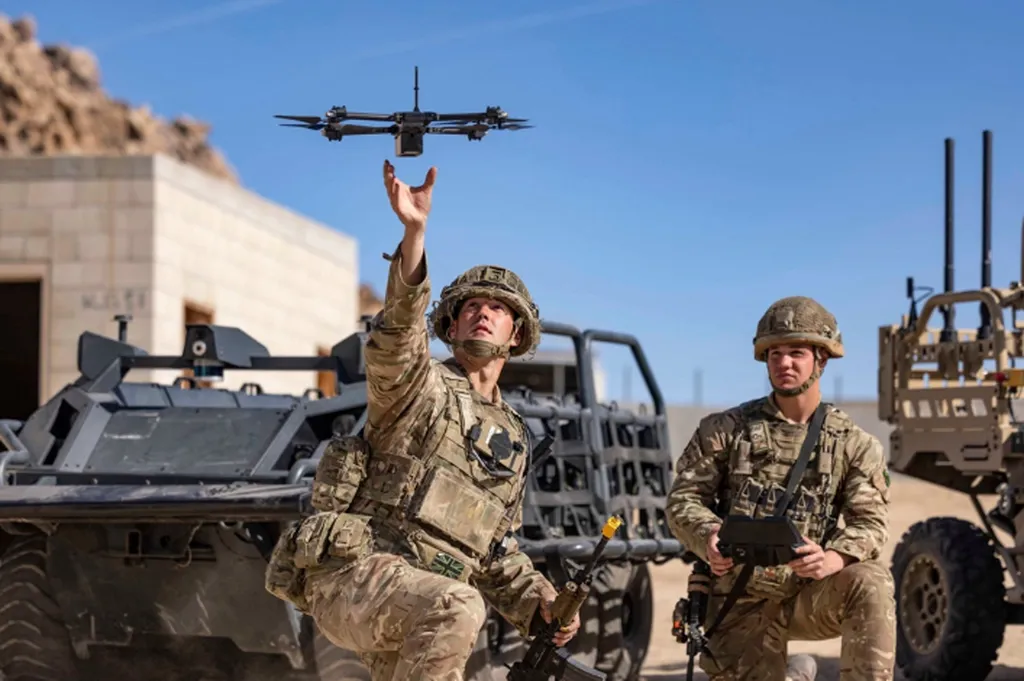In the realm of defence innovation, a team of researchers from the Beijing Institute of Technology, led by Tianjiao Sun and including Ningyan Guo, Haozhe Gu, Yanyan Peng, and Zhiyong Feng, has made significant strides in enhancing the efficiency and reliability of unmanned aerial vehicle (UAV) swarms for communication in challenging environments. Their work focuses on improving the performance of UAV swarms in complex geographic terrains, which are often characterized by unpredictable and dynamic wireless channel conditions. These conditions can lead to frequent interruptions in air-to-ground (A2G) links, severely impacting the reliability and quality of service in UAV-assisted mobile communications.
The researchers propose an integrated communication and control co-design mechanism tailored for UAV swarms. This mechanism is designed to optimize energy efficiency while balancing the need for equitable communication rates for mobile ground users and the energy expenditure of the UAVs. Given the stringent energy constraints inherent in UAV swarms, this balance is crucial for prolonged and effective operation. The team formulates the joint resource allocation and 3D trajectory control problem as a Markov decision process (MDP), which is a mathematical framework used to model decision-making in situations where outcomes are partly random and partly under the control of a decision-maker.
To enable real-time coordinated actions across the UAV swarm, the researchers develop a multi-agent reinforcement learning (MARL) framework. This framework allows the UAVs to learn and adapt their strategies in response to the dynamic environment. The team introduces a novel multi-agent hybrid proximal policy optimization with action masking (MAHPPO-AM) algorithm. This algorithm is specifically designed to handle complex hybrid action spaces, which are common in UAV swarm operations. The action masking component of the algorithm enforces hard constraints in high-dimensional action spaces, ensuring that the UAVs operate within safe and effective parameters.
Experimental results demonstrate the effectiveness of the proposed approach. The researchers achieve a fairness index of 0.99, indicating that the communication rates among ground users are highly equitable. Additionally, their method reduces energy consumption by up to 25% compared to baseline methods. This significant improvement in energy efficiency is particularly valuable in defence and security operations, where UAVs often operate in remote or hostile environments with limited access to recharging facilities.
The practical applications of this research are vast. In emergency rescue operations, UAV swarms can provide critical communication links in areas where traditional infrastructure has been damaged or is non-existent. In military and security operations, these swarms can enhance situational awareness and coordination, even in complex and dynamic battlefields. Furthermore, the ability to maintain reliable communication in remote areas can support a wide range of missions, from surveillance to disaster response.
The work of Sun and his team represents a significant advancement in the field of UAV swarm communication. By integrating communication and control mechanisms and leveraging advanced reinforcement learning techniques, they have developed a solution that addresses the unique challenges posed by complex geographic environments. Their research not only improves the reliability and energy efficiency of UAV swarms but also opens up new possibilities for their application in defence and security operations.
This article is based on research available at arXiv.

